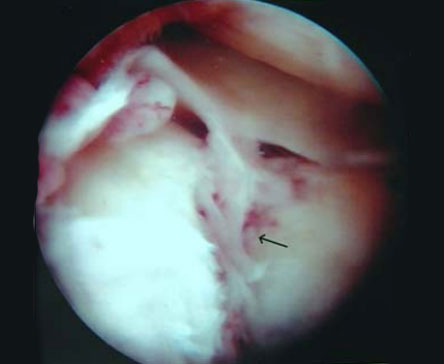Ozgur Cetik, Hakan Cift, Mehmet Asik
Received: 13 October 2006 / Accepted: 13 December 2006 / Published online: 16 January 2007
Springer-Verlag 2007
Abstract
The only way to show the healing potential in hyaline cartilage after the treatment of tibial plateau fractures in humans is the second-look arthroscopy. Our aim is to examine the healing potential of the hyaline cartilage in tibial plateau fractures treated with arthroscopy-assisted surgery. We applied second-look arthroscopy to the 12 patients out of 52 who had tibial plateau fractures treated by arthroscopy-assisted surgery. The mean age was 41. The tibial plateau fractures were classified according to Schatzker classification. The period between the primary surgical treatment and second-look arthroscopy was on an average of 19 months. Step-off was detected in 3 out of 12 patients. Hyaline cartilage of nine patients who did not have stepoff was found obviously on the fracture line.
None of them had displacement. Three patients out of 12 were above 50 years old and the average follow-up period was 26 months. Grade II–III chondral defect was detected on the fracture line and femoral condyle in patients above 50 years. For patients below 50 years old, the follow-up period was 21 months and grade I–II chondral defect was detected on the fracture line and femoral condyle. Until now in literature, tibial plateau fractures have been evaluated clinically and radiologically, but in our cases we directly saw the lesion. Cartilage healing is limited in human beings. On the fracture line, cartilage defect continues, although anatomic reduction has been achieved. Moreover, if there is step-off, insufficient healing potential appears. Although we did not have enough cases, we can say that in tibial plateau fractures anatomic reduction is mandatory. Contrary to the common idea, step-off is not tolerated by hyaline cartilage.

